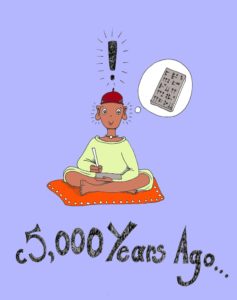This post is the first of four where I share with you the presentation I gave at the recent ResearchEd conference in Auckland, New Zealand. I spoke about what research in cognitive architecture has to offer phonics instruction. But before I tackle that, let me start by explaining what writing is about, as that underpins much of what comes later.
Whole language proponents believe that children learn to read by being exposed to books, which is supposed to enable them to recognise words as whole units that can simply be memorised. But that is not how reading works! It is much more effective and efficient to teach children how to decode and to encode.
Let me give you an example of what even fluent readers have to do when they encounter a word that is not in their spoken vocabulary. Read this:
rastrophiliopustrocity
It’s a word you probably haven’t seen before. That’s because it’s a neologism only found in the Urban Dictionary (Thanks, Lisa!). You can find its meaning here: https://www.urbandictionary.com/define.php?term=rastrophiliopustrocity.
Think about what you have to do to be able to read it. I did something like this:
/r/ /a/, ‘ra’; /s/ /t/ /r/ /oe/; /f/ /i/ ‘fi’; /l/ /i/, ‘li’; /oe/; /p/ /u/, ‘pu’; /s/ /t/ /r/ /o/, ‘stro’; /s/ /i/, ‘si’; /t/ /ee/, ‘tee’:
‘ra’ ‘stroe’, ‘fi’, ‘li’, ‘oe’, ‘pu’, ‘stro’ ‘si’, ‘tee’:
rastrophiliopustrocity.
The word contains nine syllables. Almost certainly, you had to segment the word into its sounds and to create a syllable. Then, you worked your way through the whole word putting the syllables together, and, finally, read the word.
You might have broken it down slightly differently from the way I have by simply reading the first three syllables ‘rastrophil’ as chunks; then it’s likely that you had to slow down and to put sounds together to form more chunks before you got to the end of the word. Still, however you broke it down, you should have arrived at nine syllables: rastrophiliopustrocity.
If you’re not familiar with the word at all, you probably also had to say it a few times before you were able to say it fluently.
You also did all this without using letter names and without having previously memorised the word. I wonder, having done that work if you could spell it correctly now without looking? Tomorrow? Next week?
To do the above, whether you were aware of it or not, you used your phonic knowledge. This is because if you are reading words you have never encountered previously, you are having to use your phonic knowledge.
So phonics is not some approach that just teaches kids to read /m/ /a/ /t/ ‘mat’. However, it does start there. Or rather, it doesn’t quite. A good phonics programme starts with what children learn naturally, the sounds of the language, and teaches in a sound to print direction, that is, starting with what the children already know. If children are taught well by building on their rudimentary phonic knowledge, by giving them practice in the skills they will need to be able to use their phonic knowledge, as well as by teaching them how the writing system works, they, too, will be able to read long, complex, polysyllabic words – usually by somewhere around the middle of the third year of their schooling.
How can this be done?
As I’ve said, a linguistic phonics programme goes from sound to print: its starting point is the sounds of the language, something all children know because it is part of their biological heritage. It’s primary learning, and I will deal with this in the next post. Such a programme teaches them explicitly that the sounds in their language can be represented by the squiggles we call letters (I prefer the more accurate ‘spellings’) on the page.
So, how do writing systems work?
Writing systems are spelling codes that represent the sounds of the language. Although the English alphabet code is complex and, for that reason, difficult to learn, the system is structurally very simple: there are sounds and there are spellings, spellings and sounds. That’s it!
According to Peter Daniels, one of the world’s experts on writing systems, it is necessary for a writing system to represent the sounds of the language. For that we need a graphic symbol inventory – in other words, a set of symbolic squiggles to represent the sounds of the language. After pictographic and logographic attempts at conveyin g complex information, the decisive step in the development of writing took place 5,000 years ago with the phoneticisation of graphic representation.
g complex information, the decisive step in the development of writing took place 5,000 years ago with the phoneticisation of graphic representation.
This came with the realisation that, if every sound in a language were to be represented by a symbolic squiggle, one would have an entirely accurate means of recording anything.
The Sumerians, who invented this system, also wrote manuals on how it should be taught, thus ensuring that the knowledge enshrined in written texts would be passed on through each generation.
So, although the children of every nation learn the sounds of their own language or languages perfectly naturally, they need to be taught how writing systems work because they are human inventions.
It is also true that however many changes the English writing system has undergone over the centuries and however complex and opaque it may appear, it is still the case that it represents the sounds of the English language.
So now that we have established what a writing system does and the need for a sound to print orientation when we teach children to read, in the next post I will write about the importance of understanding the difference between primary and secondary learning and why this is important when teaching phonics.